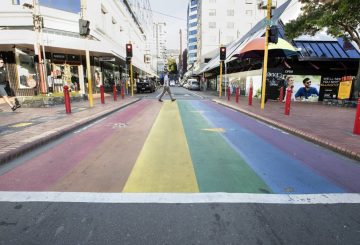토이모아나 베이 오브 플렌티 지역 협의회는 베이 오브 플렌티 지역사회의 홍수 복원력 개선을 위해 2024년 예산에서 2천만 달러를 공동 투자하는 것을 환영했습니다.연립 정부 예산에는 지역 생산성과 회복력을 지원하기 위한 지역 인프라 기금 계획이 포함되어 있습니다.3년간 총 12억 달러에 달하는 이 기금은 뉴질랜드 지역 전역의 신규 및 기존 인프라에 투자할 예정입니다.
가장 먼저 자금을 지원할 프로젝트는 홍수 방지 및 복구 프로젝트이며, 초기 배정액은 2억 달러입니다.이 중 최대 1억 110만 달러가 전국 42개 프로젝트에 투입됩니다.공동 투자는 카노아 (Kānoa) 지역 경제 개발 및 투자 부서에서 관리하며, 지역 협의회가 5개 하천 및 배수 시설 중 3곳에 걸쳐 홍수 방지 인프라 프로젝트를 수행할 수 있도록 지원할 예정이다.
이 프로젝트에는 화카타네 도심의 홍수 방어 시설 재건, 카이투나 강 하류의 홍수 인프라 개선 및 교체, 오포티키 주변 저지대 업그레이드를 위한 다단계 프로젝트인 Project Future Proof의 향후 단계가 포함됩니다.
더그 리더 (Doug Leeder) 시의회 의장은 공동 투자를 통해 지역 전체의 생명과 생계를 보호하는 데 인프라가 얼마나 중요한지 알 수 있다고 말했다.그는 홍수가 뉴질랜드에서 가장 흔한 자연 재해이며 평균 8개월마다 대규모 홍수가 발생하고 있다고 강조했습니다.그는 뉴질랜드의 홍수 인프라 대부분이 현재 또는 미래에 발생할 기상 현상의 규모나 강도에 맞게 건설되지 않았기 때문에 지금 조치를 취해야 한다고 강조했습니다.
공동 투자는 지역 및 단일 위원회와 카노아 간의 기존 공동 Resilient River Communities 프로그램을 기반으로 하며, 이는 2020년에 시작된 이래로 요금 납부자의 증가하는 비용을 완화하는 데 도움이 되었습니다.Leeder는 이번 공동 투자 라운드에서도 같은 효과를 거둘 것으로 예상된다고 말했다.
지역위원회는 현재 2024년 예산 발표가 금리에 미치는 영향을 검토 중이며, 6월 26일에 장기 계획이 채택되면 관련 정보를 공개할 예정입니다.

















































-660x440.jpg)











